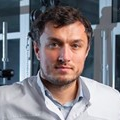Monitoring Load, Recovery, and Performance in Soccer Players
A special issue of Sports (ISSN 2075-4663).
Deadline for manuscript submissions: closed (30 April 2023) | Viewed by 22504
Special Issue Editors
Interests: soccer; post-exercise recovery; elite athletes; sports injuries; hormonal responses; testing in soccer; talent Identification
Interests: coaching science; training; training and match demands; recovery methods; immunological; hormonal responses; soccer
Special Issue Information
Dear Colleagues,
Various factors contribute to elite performance and recovery in soccer. Additionally, numerous methods are employed to track and monitor athletes’ performances and their subsequent recovery periods. These methods have gained acceptance in the elite soccer environment; still, practitioners continuously seek to gather appropriate data supporting player-centred decision-making processes to further enhance performance.
While many of these training and recovery methods have been implemented to improve technical and physical performances in acute and chronic periods, there is still a need to optimize athletic excellence and provide practitioners with contemporary methods for data collection, analysis, interpretation and intervention. It is vital that practitioners have up-to-date, useable and applicable information about a variety of techniques so that optimal protocols may be selected and employed according to the needs of differing athletic populations. This Special Issue will supplement the existing body of knowledge providing contemporary research on various aspects of elite adult soccer.
Dr. Eduard Bezuglov
Dr. Ryland Morgans
Guest Editors
Manuscript Submission Information
Manuscripts should be submitted online at www.mdpi.com by registering and logging in to this website. Once you are registered, click here to go to the submission form. Manuscripts can be submitted until the deadline. All submissions that pass pre-check are peer-reviewed. Accepted papers will be published continuously in the journal (as soon as accepted) and will be listed together on the special issue website. Research articles, review articles as well as short communications are invited. For planned papers, a title and short abstract (about 100 words) can be sent to the Editorial Office for announcement on this website.
Submitted manuscripts should not have been published previously, nor be under consideration for publication elsewhere (except conference proceedings papers). All manuscripts are thoroughly refereed through a single-blind peer-review process. A guide for authors and other relevant information for submission of manuscripts is available on the Instructions for Authors page. Sports is an international peer-reviewed open access monthly journal published by MDPI.
Please visit the Instructions for Authors page before submitting a manuscript. The Article Processing Charge (APC) for publication in this open access journal is 1800 CHF (Swiss Francs). Submitted papers should be well formatted and use good English. Authors may use MDPI's English editing service prior to publication or during author revisions.
Keywords
- soccer
- match performance
- testing in soccer
- talent identification
- coaching science
- training and match demands
- recovery methods
- hormonal responses







